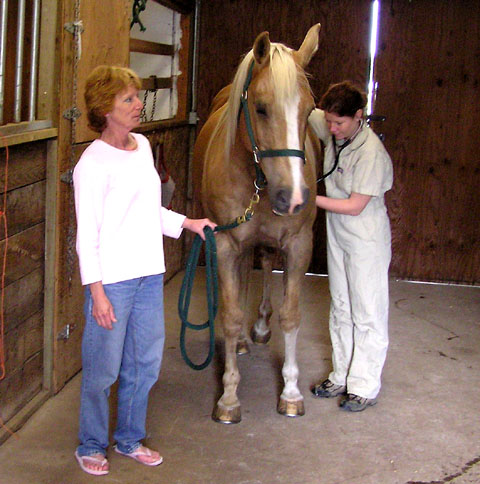
by Christa Lesté-Lasserre
From TheHorse.Com website
Ash and gases emitted since Wednesday’s initial eruption of the Eyjafjallajokull volcano in Iceland could pose breathing risks to anyone exposed, including horses, according to a European equine researcher whose work centers around respiratory disease.
Local horses (living near the volcano) could experience unconsciousness, asphyxiation, or death due to toxicity from carbon dioxide and hydrogen sulfide, said Eric Richard, DVM, MSc, PhD, researcher at the Frank Duncombe Laboratory in France. Hydrogen sulfide and ash could also provoke bronchial constriction, cough, and bronchitis among horses within the country and beyond, he added.
Endometritis in mares
Bronchoalveolar Lavage (BAL) procedures can be used to help diagnose respiratory diseases in horses, including illnesses resulting from exposure to volcanic ash and gases.
Throughout Europe, respiratory problems in horses will follow a similar geographical path as for humans. “Indeed, RAO (recurrent airway obstruction)-affected horses will predominantly represent the ‘at risk’ population, like asthma in humans,” Richard said.
Veterinarians and researchers are having to rely mainly on human data to predict the effects on horses because so little information currently exists for equines. Even less information is available on long-term effects, and the results of research on long-term effects of gas exposure in humans are controversial, Richard said. Ash could possibly trigger more cases of equine RAO—as it appears to cause silicosis and chronic obstructive pulmonary disease (COPD) in humans—but there is currently no published data to support this, he said.
The best way to protect horses from post-volcanic eruption sicknesses is to get them away from the affected air, Richard said. “The scale and nature of respiratory effects deeply depend on the concentration, size, and mineralogical composition of the ash particles inhaled,” he said.
Horses in close proximity to the volcano should be evacuated, and those in peripheral areas should be kept indoors as much as possible. Owners should follow weather reports to know if ash clouds are coming their way. Healthy horses should not be exercised strenuously outside (on a racetrack, for example), and those with pre-existing respiratory diseases should not be exercised at all.
If a horse does show severe breathing difficulties, it should receive prompt veterinary attention, Richard said. Acute cases will require critical care with oxygen therapy and bronchodilators, whereas less severe reactions can probably be controlled with medications.

Look at the footwear on the lady on left!
Yike.